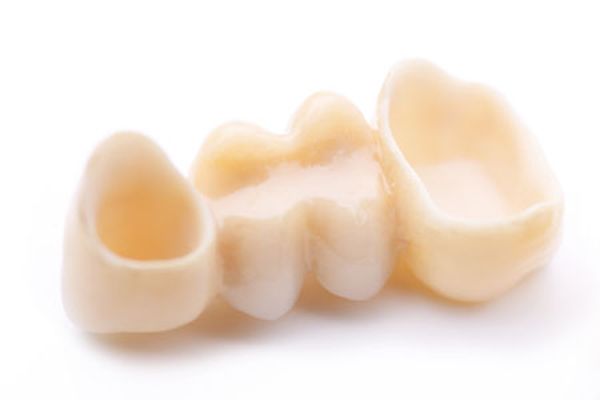
Dental Sealants Los Angeles, CA

At Dr. Robert B Tamaki, DDS, we use dental sealants as a way to protect teeth and prevent cavities. If you live in Los Angeles, CA or the 90045 area, we encourage you to call (310) 402-0156 and schedule an appointment with our dental office. We can examine you and your family before letting you know if dental sealants are the right preventative care solution for your teeth.
What are dental sealants?
Dental sealants are an incredibly thin plastic coating that we brush onto the chewing surfaces of your molars or back teeth. We do so to prevent tooth decay.
Why are they used?
Food can easily become trapped inside the deep ridges on the chewing surfaces of the teeth. These areas can be incredibly difficult to clean so at Dr. Robert B Tamaki, DDS, we prevent food and plaque buildup by sealing these ridges. By eliminating the areas for food to become trapped, the risk for cavities is decreased.
Who should get dental sealants?
Both children and adults can get dental sealants. However, this procedure is most commonly performed on children that have not yet suffered from tooth decay (at least on the tooth or teeth in question). If you or someone in your family has deep ridges in your teeth, this can be a beneficial solution for maintaining optimal oral health.
What is the procedure like?
Incredibly easy. When you visit our Los Angeles, CA dental office, we can clean your teeth. Afterwards, we will apply a gel to the surface of your teeth and let it dry. Then, we will rinse and dry your tooth again before finally placing the dental sealants. The sealant is literally painted onto the tooth and sometimes dried with a special dental light. The process only takes a couple of minutes per tooth and it is so easy that our 90045 patients are usually surprised by how quickly it is done.
Do kids mind getting dental sealants?
Typically, no. The process is easy, fast, and comfortable. There is no drilling or invasive preparation and the sealant itself does not cause any irritation or smell funny. It is truly an easy way to prevent cavities.
What does it feel like after they are placed?
We have found that our 90045 patients cannot even notice them. They do not look like anything because they are completely clear. If you run your tongue along your teeth, you may be able to feel a slight difference but they are smooth and will not feel uncomfortable in any way.
Do dental sealants really make a difference?
Yes, they do. By preventing food and plaque from becoming stuck in your teeth, the risk for developing cavities is significantly reduced. As a result, you and your family may experience less tooth decay, fewer cavities and the need for dental restorations. This means fewer dental appointments and more money in the bank.
How often do they need to be replaced?
At Dr. Robert B Tamaki, DDS, we have found that sealants typically last for five to ten years. They are incredibly effective but we will want to monitor them during regular dental examinations. Naturally, there are certain things like chewing on pencils or biting down on ice that can wear down the dental sealant so it is important to make safe and healthy choices regarding what is put in the mouth. If Dr. Tamaki sees that they are wearing down, we may recommend that they are replaced so that you or your children can continue to benefit from this layer of protection.
Where can I get dental sealants?
If you live in Los Angeles, CA or the 90045 area, call 310-402-0156 to schedule an appointment with our dental office. At Dr. Robert B Tamaki, DDS, we can examine you and your children’s teeth before letting you know if sealants are a good solution for you. We can provide you with all of the information you need to make an educated decision and to get started.
What are dental sealants?
If amazing.
Check out what others are saying about our dental sealants on Yelp: Dental Sealants Los Angeles.
A few things to consider….
Dental sealants are a tool for preventing oral health problems. They are incredibly effective at doing so and typically used in children for this very reason. They are not, however, a solve-all solution. Dr. Tamaki typically recommends that sealants as a part of an overall treatment plan, rather than as a singular solution. Regular teeth cleanings are still important and are recommended twice per year. Remember that the sealant is only placed on the chewing surfaces of the teeth so it does not work to protect the front, back or sides of your teeth from infection or tooth decay. Plaque can still build up in these areas and professional dental cleanings are the best way to remove it.
At Dr. Robert B Tamaki, DDS, we also recommend that children continue to receive fluoride treatments. Fluorine is a mineral that strengthens the teeth and has been proven to reduce the risk for tooth decay by thirty percent in children. Fluoride treatments play an active and important role in preventative dentistry so do not forgo this solution because your child has dental sealants. They approach oral health from a different angle.
While at home, you can also continue to practice good oral hygiene. This includes brushing teeth two to three times per day with fluoride toothpaste, flossing at least daily, and eating a mouth-healthy diet. Lean protein, vegetables, dairy products, and nuts can all help with the process of remineralization and work to keep teeth healthy and strong. On the other hand, chewing on ice can actually damage and chip your teeth; plus it can be harmful to your dental sealant. Make sure that you and your family are taking care of your teeth by making positive choices both in and out of the dentist office.
When you visit our Los Angeles dental office, we will be happy to provide you with more information on dental sealants and preventive care. Our goal is for you and your entire family to have healthy teeth for a lifetime. Education, prevention, and care are all part of that process. To learn more, call (310) 402-0156 and schedule an appointment today.
If you live in Los Angeles, California call 310-402-0156 and schedule your appointment to experience why patients trust Dr. Robert B Tamaki, DDS with all of their Dental Sealants needs.
Helpful Related Links
- American Dental Association (ADA). Glossary of Dental Terms. 2015
- American Academy of Cosmetic Dentistry® (AACD). Home Page. 2015
- WebMD. WebMD’s Oral Care Guide. 2015
About our business, license, and website security
- Dr. Robert B Tamaki, DDS was established in 1985
- We accept the following payment methods: Cash, Check, MasterCard, and Visa
- We serve patients from the following counties: Los Angeles County
- We serve patients from the following cities: Los Angeles, Santa Monica, Venice, Marina Del Rey, Redondo Beach, Hermosa Beach, Manhattan Beach, Westchester
- Healthgrades. View Background Information and Reviews
- Website Safety Ratings and Reputation – AVG Threat Labs. View Details
- Norton Safe Web. View Details
- Trend Micro Site Safety Center. View Details
Back to top of Dental Sealants
- Tooth Colored Fillings
- Preventative Care
- Dental Sealants



